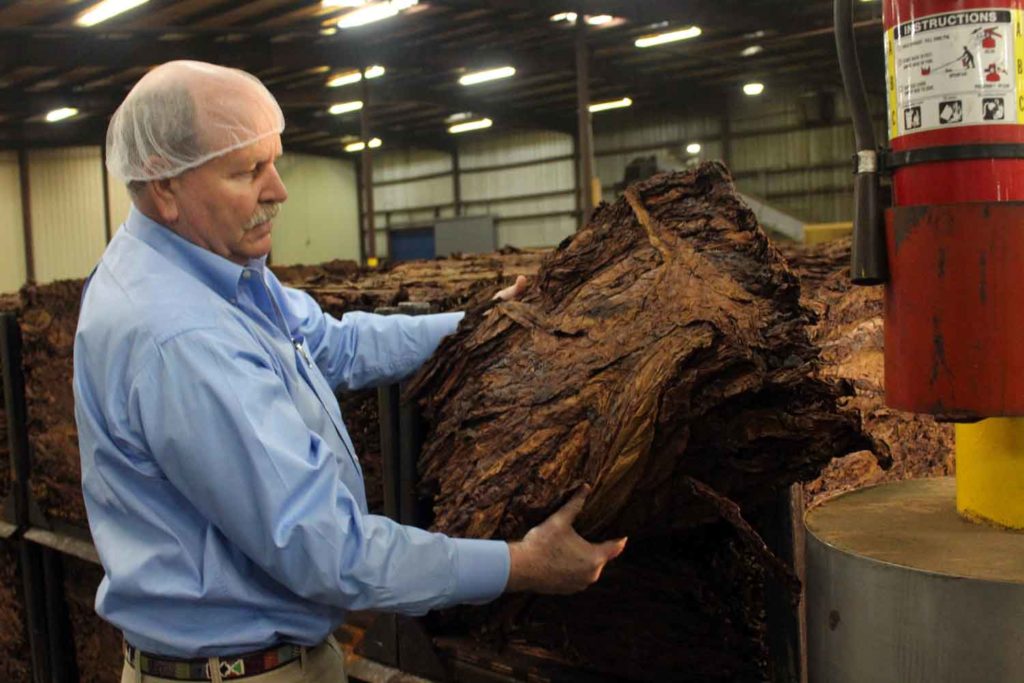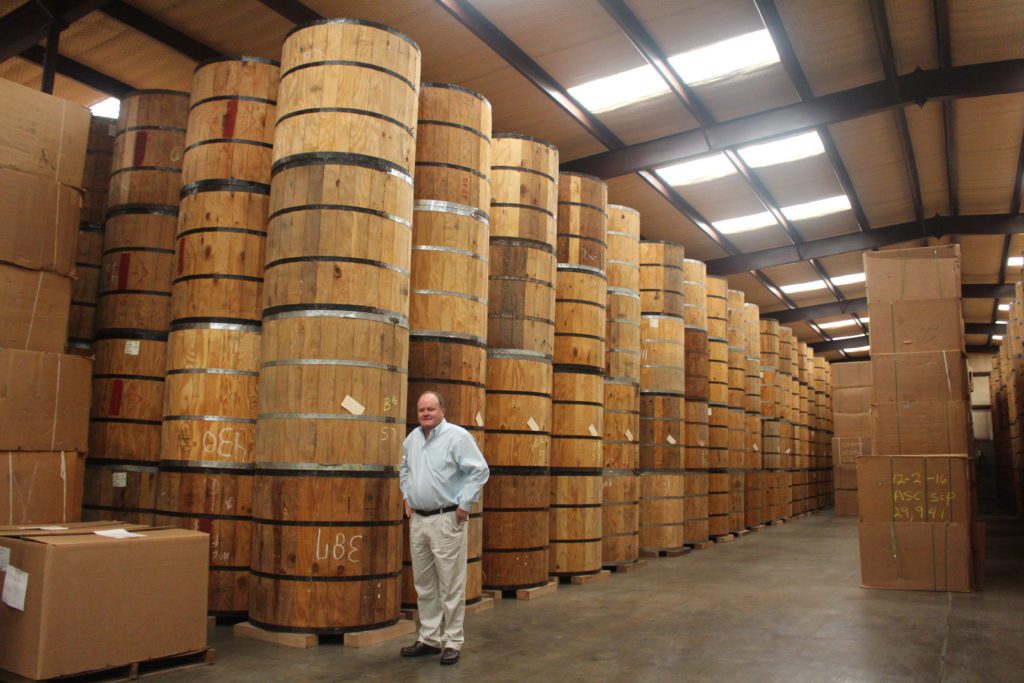Quiet confidence
- Also in TR Print Edition
- March 1, 2017
- 0
- 10 minutes read

Mike de la Fargue

Unassuming yet omnipresent, Hail & Cotton continues to punch above its weight.
TR Staff Report
It is neither the world’s largest tobacco merchant nor its most international. Yet when evaluated on the diversity of its products and services, Hail & Cotton International Group (HCIG) has few peers. “We may not be as big as Universal Leaf, but our portfolio is just as broad,” says Michael de la Fargue, president and CEO of HCIG, comparing his firm to the industry leader.
Indeed, sourcing tobacco from more than 15 countries—either directly or through partnerships—HCIG offers flue-cured Virginia (FCV), burley, dark fire-cured (DFC), dark air-cured (DAC), dark Virginia and sun-cured tobaccos, among other styles, for applications in cigarettes, pipes, cigars, chewing tobacco, moist snuff, snus, roll-your-own and water pipes.
And it can deliver those tobaccos in any way imaginable: tangled, butted, bundled, stripped, threshed—whatever format the customer may desire. HCIG even keeps on-site a stack of old-fashioned hogsheads for discerning clients in the chewing tobacco business. Its factory in Springfield, Tennessee, USA, is said to offer the most complete range of processing capabilities of any factory in the DFC/DAC arenas.
Tellingly, of the company’s 200 regular customers, 60 are niche players. Its eagerness to satisfy virtually every requirement, regardless of how unusual or how small in volume, sets HCIG apart in a business increasingly dominated by standardization and considerations of scale. For de la Fargue, that characteristic was one of the reasons he accepted the president and CEO position in 2014.
“I like the modest attitude of the company, its understated determination,” says de la Fargue, who grew up in Zimbabwe and has carved out a distinguished career in the tobacco industry, working for Japan Tobacco International, Tribac and Casalee (now part of Universal), among other companies. “HCIG is extremely committed.”
A rich history
Perhaps the best evidence of that commitment is the company’s longevity. Hail & Cotton (H&C) started in 1902 as a partnership between tobacco veterans E.A. Hail and M.R. Cotton, making it one of the oldest leaf dealers in the U.S. Incorporated in 1923, the company established its first direct packaging operations in Clarksville, Tennessee. As sales increased, it built a second factory in Springfield, producing primarily DFC and DAC tobaccos. The company also exported burley at the time and later expanded into FCV.
Over the years, H&C added threshing capabilities and expanded its storage facilities. In the 1990s, after its acquisition by Luckett Tobacco Co., H&C consolidated its operations by relocating its threshing facility and corporate headquarters to Springfield. Since then, the company has continuously upgraded its processing facilities. H&C has built or acquired industrial properties to accommodate customer requirements for leaf receiving, purchasing, processing and packed storage of tobaccos of U.S. and other origins.
In 2011, H&C purchased CdF International Group, which was created in 2007 when Compania General de Tabacos de Filipinas (CdF) of Spain and Lippoel Leaf of the Netherlands combined their businesses to form a new independent leaf dealer.
CdF was established in 1881 to assume operations of the tobacco factories owned by the Spanish government in the Philippines after the abolition of that country’s tobacco monopoly. After the 1950s, the company expanded internationally, moving into Latin America and Indonesia.
HCIG was created as a result of the combination of H&C and CdF.

New blood
The diverse roots of its forerunners enabled HCIG to offer an unmatched portfolio of products, services and geographical origins. The merger also brought together some of the most experienced people in their respective fields. The DAC operations, for example, are handled by Eric van der Linden, who has for many years managed such tobaccos in Indonesia, Brazil and the Dominican Republic, among other places. Chris Cooksey, in charge of HCIG’s North American business, has been with the company for more than two decades, and Andy Spies, who leads the firm’s international operations, boasts equally impressive global tobacco credentials.
“We have a very solid management team,” says de la Fargue. “Each member has more than 25 years of industry experience.” A tradition of sound management, buttressed by a committed and supportive shareholder, has allowed the company to navigate through challenges such as the 2008 global financial crisis and the increasingly restrictive environment for tobacco.
Since assuming the helm in 2014, de la Fargue’s strategy has been to supplement the company’s existing strengths with new talent and to keep up with mounting tobacco regulations, such as those enacted by the European Union, the U.S. Food and Drug Administration and various national governments. While most of those regulations are aimed at tobacco product manufacturers, they also impact suppliers, who must help their customers comply. “We have been bringing on board new people to bolster our compliance program,” says de la Fargue, adding that the company has an extensive training program in relation to its size.
The new blood is welcome, according to de la Fargue, because the tobacco industry, including HCIG, somewhat neglected talent development during the 1990s and the 2000s, leading to a void of people in the 30–45 age range.
Sustainability and product integrity feature prominently in the company’s thinking. In each of its sourcing areas, HCIG is committed to good agricultural practices, fair labor conditions and environmental protection. “We are too small to have a separate division for each individual issue, but we manage to look after them through our quality and sustainability department,” he says. While happy to carry out sustainability programs on behalf of his customers, de la Fargue insists that the philosophy extends to HCIG’s operations, as well. “We must ensure that our business, too, is sustainable,” he says.
While lacking the scale of its big-league competitors, HCIG manages to punch above its weight through clever strategies and shrewd partnerships. In some origins, the company runs full-fledged operations, complete with farmer-support services, processing facilities and packing capabilities. In others, it participates with a decidedly lighter footprint. Instead of putting down bricks and mortar, the company may team up with an established local player. All of HCIG’s international operations are managed out of Aalsmeer, Netherlands, supplemented by on-the-ground personnel.
To de la Fargue, it’s a matter of cleverly managing assets. “It allows us to be agile,” he says. Southern Brazil is a good example. “The last thing that area needs is another leaf processing factory—so we operate through a third party on an exclusive, contracted and pre-committed basis to purchase our requirements ,” says de la Fargue. In Zimbabwe, too, HCIG maintains a light presence, partnering with a trusted local company as that country’s political uncertainty endures.

Regardless of the size of its footprint in each origin, HCIG likes to work with local people. “Our strength is our people on the ground,” says Van der Linden, adding that DAC tobaccos, in particular, require experienced handlers. “DAC is complex, tough tobacco in terms of handling, curing and fermentation—you don’t quickly learn those skills in the GLT,” he says. “Cigarette leaf skills don’t often transfer to cigar tobacco, and vice versa; you need experienced people in each.”
Constantly monitoring supply and demand, HCIG is always exploring new opportunities. “We aren’t afraid to invest,” says de la Fargue. If the situation calls for it, however, the company will not hesitate to disinvest, either. Recently, for example, HCIG pulled out of Cameroon, having decided that it could no longer justify its presence in light of changing market circumstances.
At the same time, HCIG is constantly looking for ways to optimize its existing operations. In Indonesia, for example, it recently consolidated its operations, commissioning new machinery and storage facilities while shuttering old ones. Following the reorganization, 90 percent of its Indonesian operations are located on a single compound, improving efficiency and convenience.
Investment continues apace. In September 2016, HCIG inaugurated a new threshing line at its Industrial Drive facility in Springfield. It also installed a new dust-removal system and updated its stem line. Its Main Street facility in the same town was equipped with a stainless steel conveyor system to meet industry standards. The redrier was converted to a PLC system and received new valves, while the press was fitted with a new oil filtration cooling system using compliant food-grade oil.
HCIG’s U.S. operations have been ISO 9001:2008 certified since 2011, and the company’s international facilities are working toward the same.
For the time being, the company is steering clear of nicotine extraction for the vapor industry. Entering the e-liquids business requires heavy upfront investment, according to de la Fargue, and HCIG prefers to stick to its core business instead. “We know tobacco and have chosen to focus on our growing international footprint,” he says.
While acknowledging the challenges facing the traditional leaf trade, de la Fargue is confident about the future. “The industry is changing rapidly, and we must rise to the occasion,” he says. “It won’t be easy, but I am energized by the challenge.”
Through sound management, clever partnerships and an unwavering commitment to its customers, HCIG has thrived for more than a century. If it’s up to de la Fargue and his colleagues, the company will remain at the forefront of the leaf tobacco industry for at least another 100 years.
